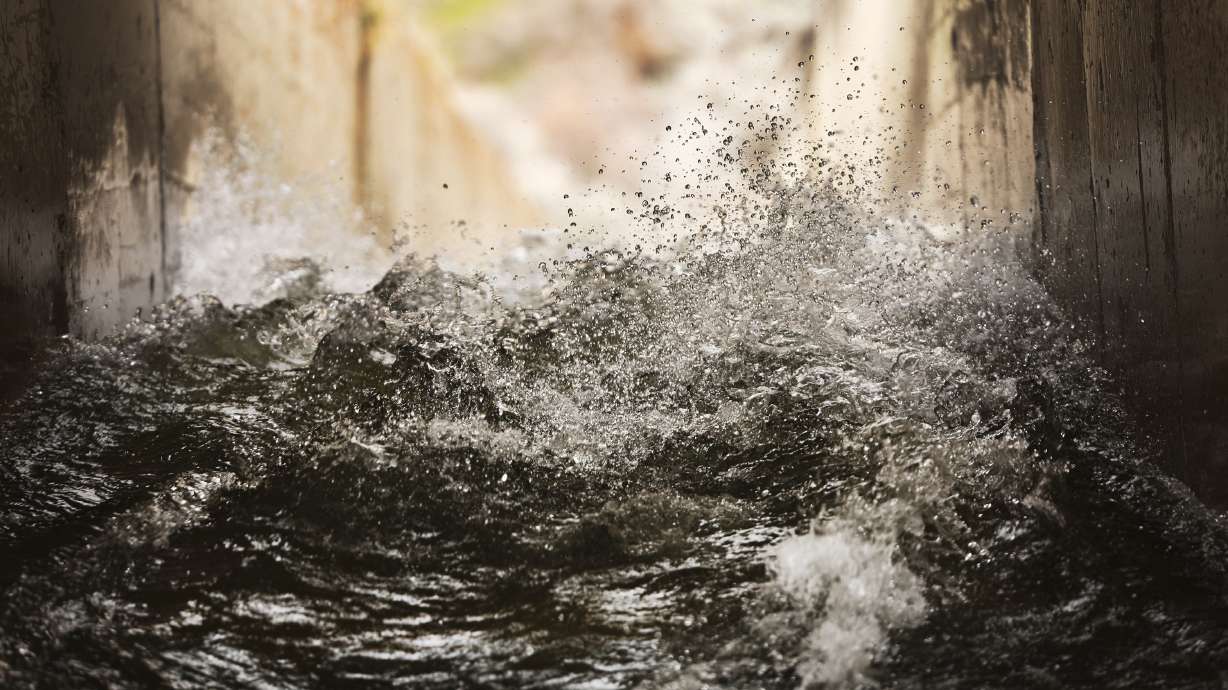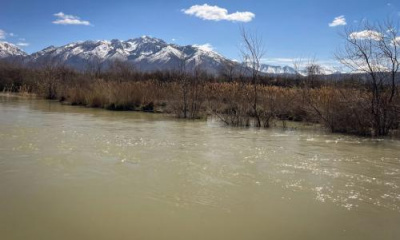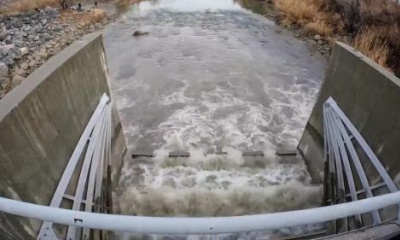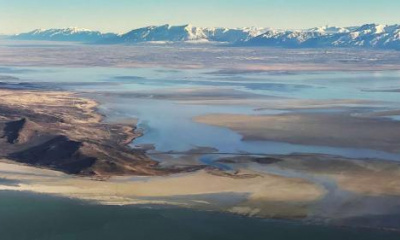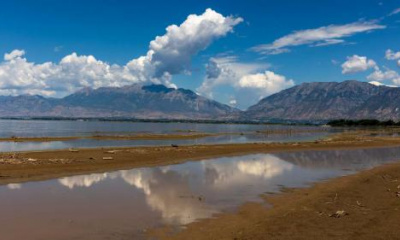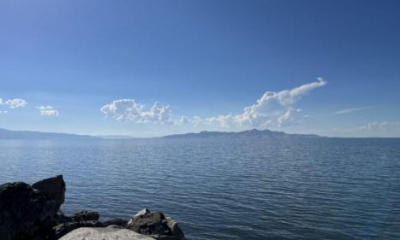SALT LAKE CITY — The Great Salt Lake remains about 5½ to 8 feet below its minimum healthy level, depending on what side of it you're viewing; however, the person tasked with overseeing efforts to refill it says the lake could get another decent jolt this spring while he and others work to implement a long-range plan for the future.
Great Salt Lake Commissioner Brian Steed says a normal snowpack this winter would be beneficial for the lake after last year's record snowpack boosted it out of its record-low rut, for a pair of key reasons.
First, Utah's main reservoirs, combined, are at 80% of capacity before any of the snow collected this winter melts — 23 percentage points above the median average for January. It means less is required from the snowpack to refill the reservoirs, and managers along the Great Salt Lake basin could conduct controlled releases again this winter and spring to manage flooding risks, sending extra water to the struggling lake.
Second, soil saturation levels across the state remain slightly above the median average, likely resulting in more snowmelt ending up in streams instead of recharging depleted groundwater reservoirs.
"We anticipate a better runoff this year, so we'll be working with water conservancy districts as well as others to make sure we get that water out of those reservoirs in a safe and effective way. We don't want flooding — nobody wants flooding," Steed said. "There's only so much that you can capture safely within those reservoirs and we think the Great Salt Lake stands to benefit from releasing that water."
More long-term solutions are still needed beyond this spring to keep the lake at its 4,198 feet elevation, though, Steed explained to members of the Utah Legislature's Natural Resources, Agriculture and Environmental Quality Appropriations Subcommittee on Monday.
His office is seeking a little more than $25 million from the state's general fund, most of which would be directed to the state's account for water leasing and other programs aimed at helping the lake. About $750,000 would go toward the implementation of the Great Salt Lake strategic plan released last week.
Other money will go toward investing in "the best science and data" to better understand the lake's water budget and what can save the lake, Steed explained. The office plans to launch a split-season lease program, where an irrigation user is paid to send water to the lake instead of using it, as one of the new measures to get water to the lake.
"We probably now need to quantify how much water is being saved, as well as examine opportunities for putting that water in places where it needs to be," he said.
Spring gains?
Steed spent most of his presentation reviewing changes since lawmakers approved his office during the 2023 legislative session. Last year's record snowpack hoisted the Great Salt Lake out of its record-level low, but he called it a "small blip" when compared to the lake's recorded water levels since 1900.
The boost also only benefited the lake's southern arm because crews raised a berm between the two sides to combat the northern arm's salinity from flowing into the southern arm during its record-low state, protecting the southern arm's vital ecosystem. The southern arm remains at 4,192.6 feet and the northern arm is 4,189.9 feet, per the U.S. Geological Survey.
With a normal snowpack this winter, the lake levels could make another big leap in the spring because of favorable conditions following the 2023 water year, such as reservoir levels and soil moisture levels.
"We captured 1.6 million acre-feet of water in our reservoirs last year. ... We're now sitting at (80%) full, which is phenomenal for this time of the year, so we do expect more runoff out of those reservoirs," Steed said.
Utah is back on pace for a normal season because of the storms over the past few weeks. The state's snowpack average Monday was 102% of the average for this point in the season, according to Natural Resources Conservation Service data.
It's a bit better in the Great Salt Lake basin since this season's storms have more often impacted Utah's northern half. The snowpack basins fueling the Great Salt Lake's primary tributaries remain about 107% to 117% of the average. The snowpack normally peaks in early April before melting off by later May or early June.
"It's been a little bit of a roller coaster," Candice Hasenyager, director of the Division of Water Resources, said, referring to the snowpack. "The two weeks, we've jumped back up to about normal conditions, so hopefully we can keep up with that. It would really be great to have at least a normal year."
Other plans
The newly released strategic plan covers other efforts over periods ranging from this year to as far out as the next 30 years. The efforts include better collaboration between government agencies, better science and understanding of the lake, ways to get more water to the lake and removing invasive species like phragmites.

